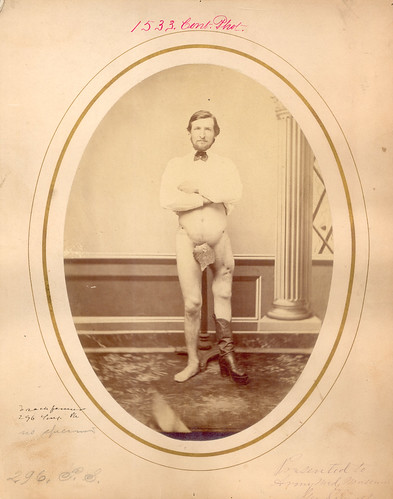POSITION: INTERIM MUSEUM DIRECTOR / CONSULTANT
Projected start date: March 1, 2010
Apply here: http://www.mgh.harvard.edu/careers/viewall.aspx
Massachusetts General Hospital intends to build and establish a new
museum on its main campus in downtown Boston. The Mass General Museum is
to be located in a prominent location on Cambridge Street, a highly
visible and public edge of the main campus facing Beacon Hill to the
south.
By means of exciting and enriching exhibits and educational programs,
the intent of the Museum is to serve the hospital of which it is a part,
the medical profession and researchers, and a wider audience that
includes patients, visitors and the general public. The museum will also
be a "venue of distinction" for receptions, functions, and dinners.
Included is the Mass General archives, which is the repository of
documents and records closely associated with the history of the Mass
General. Safe and secure access to the full archives and providing
reading room accommodation for researchers on site is an important
function of the history program.
The position of Interim Museum Director/Consultant is of 9 to 12 months'
duration during which time architectural planning and exhibition design
will be in progress. In addition, policy and procedure development,
financial planning, fundraising, and personnel preparation (paid staff
and volunteers) for the museum and archives will proceed. It is the
intention of the Hospital to succeed this temporary appointment with a
full-time position, contingent upon sufficient funding.
GENERAL SUMMARY/ OVERVIEW STATEMENT
The museum director will be responsible for the development and
implementation of policies and procedures of the Mass General museum.
The director will work closely with the Mass General History Committee
and other subcommittees to ensure effective communication and is the
lead spokesperson and advocate for the museum within the internal and
external community. With senior management, the museum director assumes
financial and operational authority for the museum within budgetary
guidelines. The director oversees curatorial activities, art and
artifact collection, archives, database, website, and all educational
programming activities. The director supervises all museum staff and
volunteers.
During the course of design and construction, the museum director will
work closely with senior management, the project manager, architects and
engineers, exhibition design consultants, volunteers, the Mass General
History Committee, and other parties engaged in the development of the
museum.
PRINCIPAL DUTIES AND RESPONSIBILITIES
MANAGEMENT AND LEADERSHIP
* Works with the Mass General History Committee and senior leadership to
develop and adhere to the mission, goals, and objectives of the museum.
Directs and leads the implementation and articulation of these goals in
a collaborative and cooperative manner.
* Understands the unique nature of the museum within the context of the
hospital community (patients, families, staff, clinical providers, and
donors).
* Provides vision and dynamic personal leadership to internal museum
staff and external community regarding museum strategy, programming
initiatives, and mission. Serves as the key spokesperson for the museum.
* Develops policies and procedures that govern all areas of museum
operations including collection management, curatorial operations,
storage, exhibition design and evaluation, accessibility, education and
programming, registration and database, archives, research,
conservation, website, and communications. Adheres to and keeps current
with all privacy policies instituted within the hospital setting.
* Develops annual operating and capital budgets for the museum.
Monitors operating budget versus actual expenses and identifies
variances.
* Supervises professional staff, non-professional administrative staff,
and volunteers. Performs annual performance appraisals.
* Recommends capital budget proposals regarding equipment, space, and
renovations.
* Manages the recruitment, interviewing, hiring and training of museum
staff. Initiates corrective action as necessary according to Mass
General policies and procedures.
* Insures compliance with the legal requirements that govern museums and
non-profit institutions.
* Works collaboratively with Public Affairs and Marketing to develop
appropriate communication and marketing materials.
* Works collaboratively with Mass General Development Office to assist
in the creation of philanthropic case statements, prospect contact,
cultivation, and stewardship of existing donors.
* Develops strong volunteer engagement, retention and recruitment
programs in coordination with the Ladies Visiting Committee and the Mass
General Volunteer Department.
* Develops docent training program for staff and volunteers.
* Facilitates and encourages continuing education for museum staff and
self.
* Maintains a clean, safe, and inviting physical environment within the
museum and archives. Maintains proper conditions within museum and
storage areas for collection and archives.
* Develops disaster plan in accordance with Mass General policies and
communicates plan to staff. Recognizes special requirements of Mass
General collection and archives.
EDUCATION COLLABORATION
* Works with internal museum staff, key hospital staff and committees,
as well as external stakeholders to develop content for unique
educational programs within the museum.
* Develops inspirational educational programming, seeking direction from
the museum's mission statement and Mass General community.
* Evaluates the effectiveness of exhibitions and educational programs
and makes improvements as necessary.
* Develops and implements educational programs adjunct to onsite
exhibits. May include workshops, special lectures and visiting experts.
GRANTS
* Submits funding proposals to appropriate agencies for special
projects.
* Monitors awarded grants for compliance, balanced budget, and funder
communication.
* Works with Mass General Research Management office to comply with
internal and external grant requirements.
QUALIFICATIONS
* Master's Degree required. Doctoral degree with strong research
background would be of interest.
* Museum experience required.
* Supervisory and management experience required.
* Strong communication skills, both oral and written, with the ability
to show flexibility within an increasingly diverse and complex
environment.
* Strong customer service and interpersonal skills.
CONTACT
Hubert Murray FAIA RIBA
Senior Project Manager
MGH Planning and Construction
all correspondence to be addressed to:
Partners HealthCare Inc.
101 Merrimac Street, Suite 800
Boston, MA 02114-4719
T | 617.643.6414 F | 617.724.2740
Email: HMURRAY2@PARTNERS.ORG









